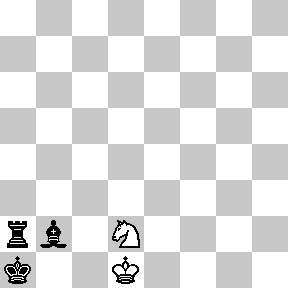[This is post #4 in a series on the Thue-Morse sequence. See posts #1, #2, and #3.]
What? You don’t agree that the Thue-Morse sequence is awesome? OK, there’s only one way to settle this dispute: I challenge you to a duel. This unfortunately might take a while, because we both have terrible aim.
Let’s say we both have the same probability \(p=.2\) of hitting our target on any given shot, and the first to hit is the winner. I’ll even be gracious and let you go first, and I’ll shoot second. In the first two shots of the game, the probability that you win (i.e., hit your first shot) is \(p=.2\), and the probability that I win (i.e., you miss and then I hit) is \((1-p)\cdot p = .16\). (In the remaining probability \(1-.2-.16=.64\), the duel continues.) This means that you are more likely to win during the first two shots than I am, so it should only be fair that I take the third shot!
How do the probabilities look in the first three shots? Your chances of winning are still \(p=.2\), while mine are \((1-p)\cdot p + (1-p)^2\cdot p = .288\) because I might win on the second or third shot. Now it seems that I have the advantage, so you should take the 4th shot in the interest of fairness. Let’s continue like this, choosing to give the 5th shot to the theoretical underdog from the first 4 rounds, the 6th shot to the underdog in the first 5 rounds, and so on.
You can (and should!) check that the shot order will be Y, M, M, Y, M, Y, Y, M, M, Y, M, Y, Y, M, M, Y, ..., where Y=You and M=Me. Does that sequence look familiar? The first 10 digits look suspiciously like the start of the Thue-Morse sequence, but I don’t recognize the rest of it. Did we make a computation error? Hmm…
The problem, as it turns out, is that our aim is too good! What happens if we make ourselves worse by, say, standing farther apart? Let’s say we now have a \(p=.1\) chance of hitting our mark on each shot. What is the “fair” shot order this time? Our duel will now follow the sequence Y, M, M, Y, M, Y, Y, M, M, Y, Y, M, Y, M, M, Y, M, Y, Y, M, M, Y, Y, ... which matches the Thue-Morse sequence in the first 20 digits. Similarly, setting \(p=.05\) gives 48 correct Thue-Morse digits, defining \(p=.01\) gives 192 correct Thue-Morse digits, and decreasing to \(p=.001\) gives 1536 matching digits! It can in fact be proved[1] that decreasing \(p\) toward 0 (i.e., making our aim worse) gives more and more Thue-Morse digits, with the full Thue-Morse sequence appearing in the limit.
See? Even when arguing about whether the Thue-Morse sequence is cool, we find evidence of its greatness! I hereby declare myself the winner of this duel.
This concludes our series on the Thue-Morse sequence. Tune in next week for, well, something else!
Notes
- Joshua Cooper and Aaron Dutle. Greedy Galois Games. ArXiv, 2011. [↩]









